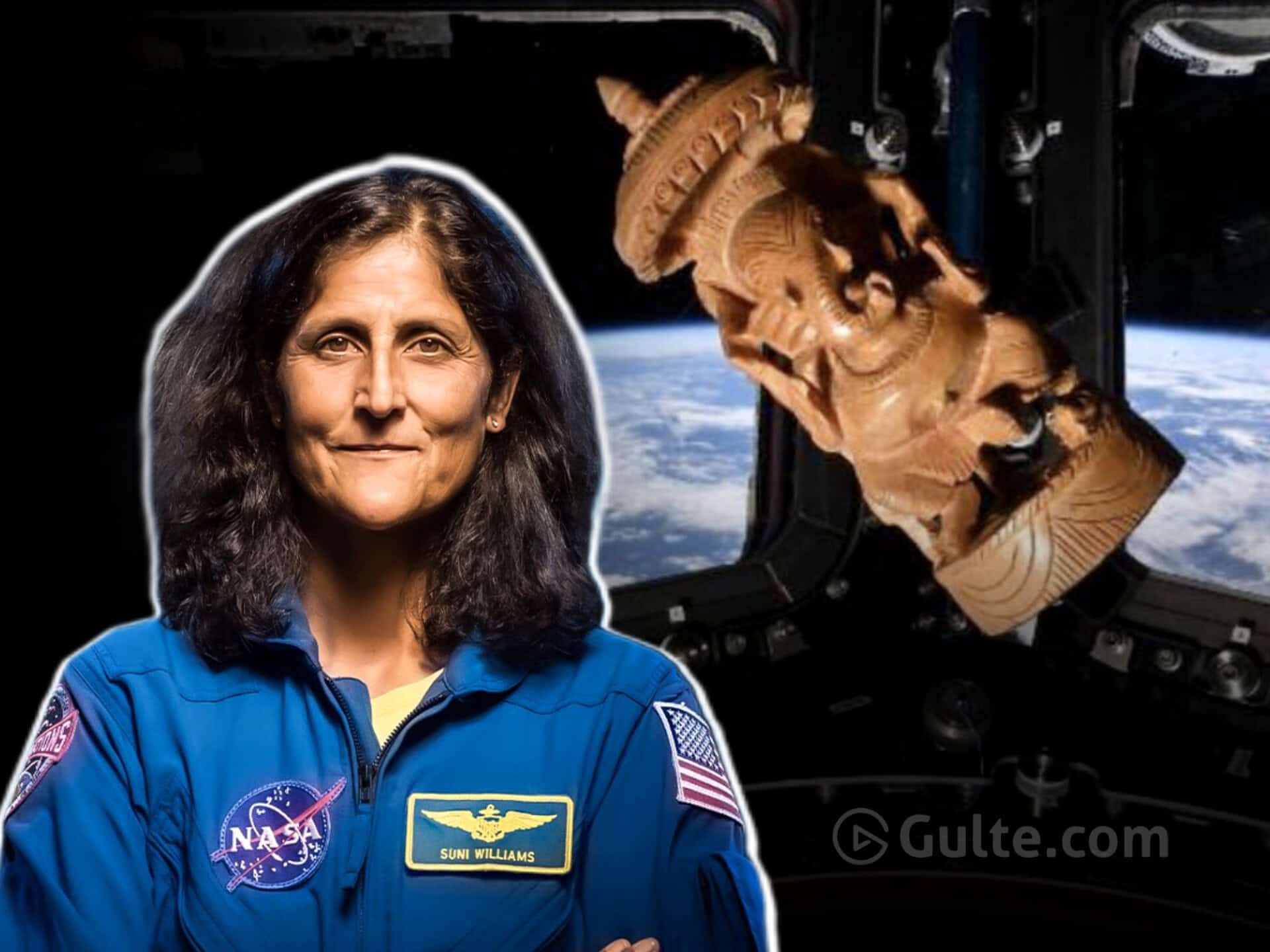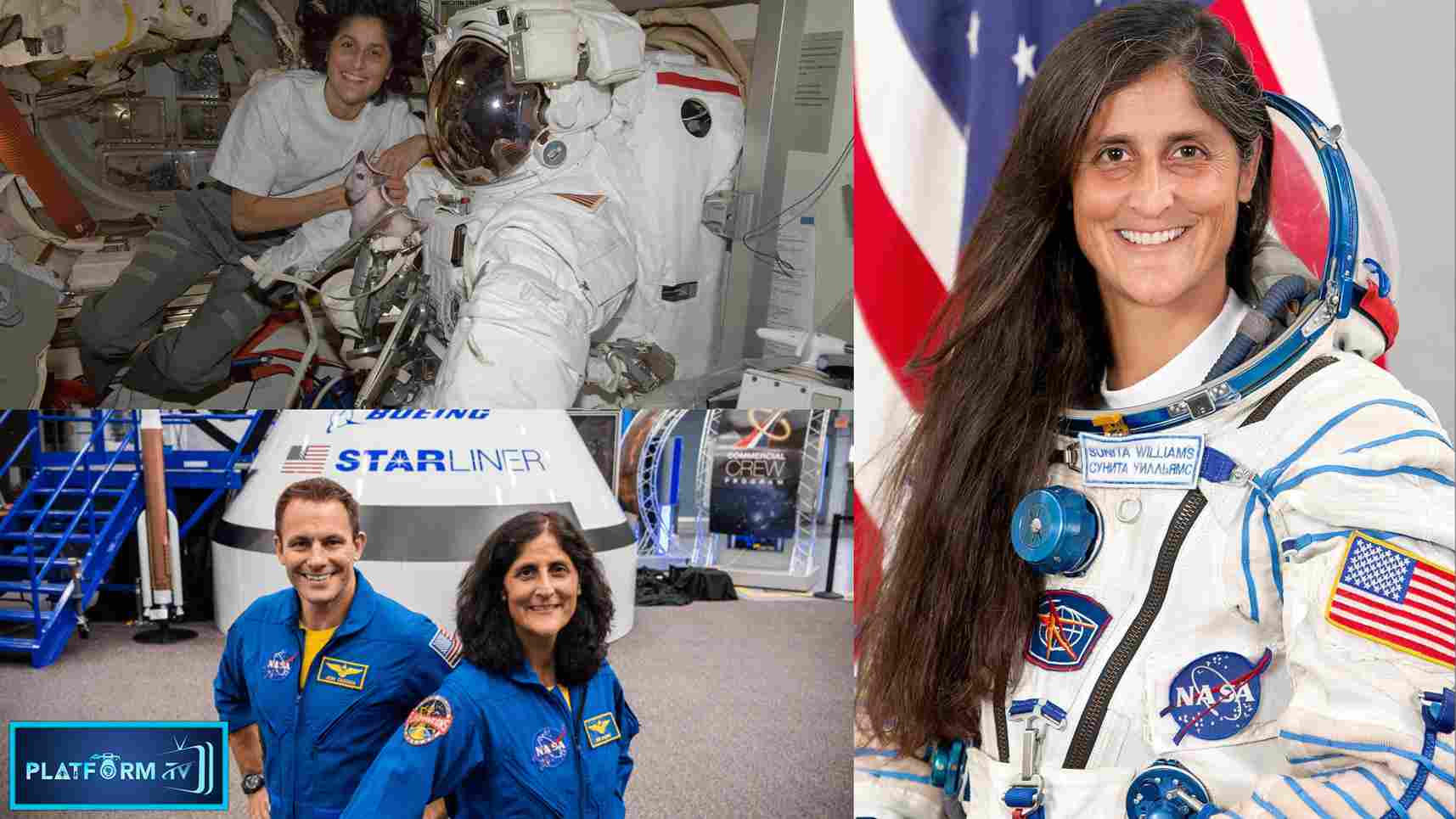Sunita Williams: An Astronaut's Journey Beyond Earth
Biography of Sunita Williams: A Life Dedicated to Space Exploration
The life of **Sunita Williams** is a testament to perseverance, intelligence, and an unwavering commitment to exploration. Born in Euclid, Ohio, on September 19, 1965, to Deepak Pandya and Bonnie Pandya, Sunita's heritage is a blend of Indian and Slovenian roots. Her father, a distinguished neuroanatomist, immigrated from India, while her mother is of Slovenian descent. This diverse background has often been a point of pride and inspiration for many, particularly within the Indian diaspora. Her journey from a curious child to a celebrated astronaut is paved with rigorous training, relentless dedication, and an insatiable desire to understand the universe.Early Life, Education, and NASA Selection
Sunita Williams' academic and professional trajectory laid a solid foundation for her eventual career as an astronaut. She graduated from Needham High School in Needham, Massachusetts, in 1983. Following her high school education, she pursued a Bachelor of Science degree in Physical Science from the U.S. Naval Academy, graduating in 1987. Her passion for aviation and engineering led her to further her education, earning a Master of Science degree in Engineering Management from Florida Institute of Technology in 1995. Her military career began with her commissioning as an ensign in the United States Navy. She became a Naval Aviator in 1989 and went on to serve in various helicopter squadrons, participating in operations worldwide. Her extensive experience as a test pilot, accumulating over 3,000 flight hours in more than 30 different aircraft, made her an ideal candidate for NASA's demanding astronaut program. It was in 1998 that **Sunita Williams** was selected as a NASA astronaut, marking the beginning of her extraordinary journey into space. This selection placed her among an elite group of individuals chosen to represent humanity in the ultimate frontier.Personal Data & Biodata
To provide a clear overview of her professional and personal details, here is a summary of **Sunita Williams'** biodata:| Category | Detail |
|---|---|
| Full Name | Sunita Lyn Williams |
| Nationality | American |
| Heritage | Indian (father), Slovenian (mother) |
| Born | September 19, 1965 (age 58 as of 2024) |
| Place of Birth | Euclid, Ohio, U.S. |
| Occupation | Astronaut, Retired U.S. Navy Officer |
| Alma Mater | U.S. Naval Academy (B.S.), Florida Institute of Technology (M.S.) |
| NASA Selection | 1998 |
| Total Space Missions | 3 (as of 2024) |
| Total Spacewalks | 9 |
| Total Spacewalk Time | 62 hours (most of any female astronaut) |
| Total Days in Space | 608 days (as of 2024, after Starliner mission) |
| Notable Records | Most spacewalk time by a female astronaut; longest single spaceflight by a female astronaut (at the time of her second mission); second American woman of Indian heritage to fly to space. |
Record-Breaking Voyages: Sunita Williams' Early Missions to the ISS
**Sunita Williams** has flown to the International Space Station (ISS) three times, each mission adding to her impressive record of accomplishments. Her first two spaceflights were particularly notable for their duration and the records she established. Her inaugural mission, Expedition 14/15, began in December 2006 and lasted until June 2007, marking a significant period of scientific research and station maintenance. During this time, she set a new record for the longest single spaceflight by a female astronaut, a testament to her endurance and adaptability in the microgravity environment. Her second mission, Expedition 32/33, launched in July 2012 and concluded in November 2012. These two spaceflights combined lasted more than 321 days, showcasing her sustained presence and contributions aboard the orbiting laboratory. On these missions, she not only performed crucial scientific experiments but also played a vital role in maintaining the complex systems of the ISS, often venturing outside the station to perform necessary repairs and upgrades. These early missions cemented her reputation as a highly capable and reliable astronaut, paving the way for her continued involvement in critical spaceflight endeavors.The Rigors of Spacewalks: Sunita Williams' Unmatched Feats
One of the most challenging and visually spectacular aspects of space exploration is the spacewalk, or Extravehicular Activity (EVA). **Sunita Williams** has truly excelled in this demanding domain, holding several records that highlight her expertise and courage. She has performed nine spacewalks throughout her career, a remarkable number that underscores her integral role in the maintenance and assembly of the International Space Station. Collectively, she has completed 62 hours of spacewalk time, which stands as the most of any female astronaut in history. This record is not merely a number; it represents countless hours spent in the unforgiving vacuum of space, performing complex tasks with precision and resilience. Each spacewalk requires immense physical strength, mental fortitude, and meticulous planning. Astronauts must contend with extreme temperatures, the absence of gravity, and the constant threat of micrometeoroids, all while manipulating tools and equipment with bulky gloves. Williams' ability to consistently perform these intricate operations under such conditions speaks volumes about her training, skill, and composure. Her contributions during these EVAs were critical for the ongoing operations and expansion of the ISS, making her a true pioneer in the field of orbital construction and maintenance.The Starliner Mission: A Pioneering Yet Challenging Endeavor
**Suni Williams** is a veteran of three space missions, with her most recent being the first crewed flight of Boeing's Starliner spacecraft in 2024. This mission, known as the Crew Flight Test (CFT), was a landmark event, marking a new chapter in commercial human spaceflight. Alongside fellow NASA astronaut Butch Wilmore, Williams launched aboard Boeing’s Starliner spacecraft on June 5, 2024, arriving at the International Space Station on June 6. This mission was designed to certify Starliner for regular crew transportation to the ISS, a critical step in NASA's Commercial Crew Program. However, the mission quickly encountered significant technical issues. The Starliner spacecraft experienced multiple helium leaks in its propulsion system and other anomalies, which raised concerns about its safety and ability to return the crew to Earth. These issues led to repeated delays in the spacecraft's departure from the ISS, turning what was intended to be a short test flight into an unexpectedly prolonged stay for Williams and Wilmore. Following the agency’s decision to return Starliner uncrewed, the duo became official Expedition 71/72 crewmembers, integrating into the long-duration crew of the space station while solutions were sought for their return. This unforeseen extension highlighted the inherent complexities and unpredictable nature of space exploration and spacecraft development.An Unexpected Extension: Sunita Williams' Nine Months in Space
Due to the persistent technical issues with Boeing’s Starliner spacecraft, what was originally planned as a brief test mission for **Sunita Williams** and Butch Wilmore evolved into an extended stay of nearly nine months at the International Space Station. Their return was delayed multiple times, creating uncertainty and a unique challenge for the astronauts and NASA. The initial issues with Starliner's propulsion system and subsequent concerns about its readiness for re-entry meant that the spacecraft could not be relied upon for their return journey. This prolonged duration in space, far exceeding the typical length of a test flight, meant that Williams and Wilmore had to adapt to living aboard the ISS for an extended period. They continued to perform scientific experiments, maintain station systems, and participate in daily operations alongside the existing Expedition crew. The situation underscored the flexibility and resilience required of astronauts, who must be prepared for any eventuality in the harsh environment of space. NASA was actively working on solutions, exploring options for their return, which eventually led to the decision to use a different spacecraft. The extended stay also meant that the astronauts' bodies would undergo more significant physiological changes, necessitating a longer and more intensive rehabilitation period upon their eventual return to Earth.The Journey Home: Sunita Williams' Return Aboard SpaceX Dragon
After spending nearly nine months in space, far longer than initially anticipated due to the Boeing Starliner's technical difficulties, NASA astronauts **Sunita Williams** and Butch Wilmore finally received the green light to return to Earth. Their prolonged stay on the International Space Station (ISS) had become a major point of focus for the space community, and the safe return of the duo was paramount. The decision for their return vehicle shifted from the problematic Starliner to SpaceX’s Crew Dragon spacecraft. On March 19, NASA announced the planned return, which was then carefully coordinated to avoid worsening weather conditions later in the week. The duo hitched a ride home aboard SpaceX’s Crew Dragon Freedom, a testament to the collaborative nature of modern spaceflight and the robustness of NASA's commercial crew program. They were joined by NASA’s Nick Hague and Russia’s Alexander Gorbunov, who were already scheduled to return on that particular Dragon capsule. This carefully coordinated rescue mission by NASA and SpaceX ensured that the astronauts would soon be back on solid ground. The successful return aboard the SpaceX Dragon spacecraft marked the culmination of a challenging but ultimately triumphant mission for Sunita Williams and her crewmate, bringing an end to their unexpected nine-month orbital odyssey. The landing was met with widespread relief and celebration, highlighting the successful resolution of a complex logistical challenge.Readjusting to Earth: The Post-Mission Rehabilitation for Sunita Williams
Returning to Earth after an extended period in microgravity is a significant physiological challenge for astronauts, and **Sunita Williams** was no exception. After spending more than nine months at the International Space Station, her body, along with that of Butch Wilmore, needed to readapt to the forces of Earth's gravity. The effects of long-duration spaceflight on the human body are profound, impacting bone density, muscle mass, cardiovascular function, and balance. Upon their return, NASA astronauts Sunita Williams and Butch Wilmore entered a specialized rehabilitation program designed to help them adjust to Earth's environment. This program, typically lasting around 45 days, is tailored to the specific needs of each astronaut, addressing the unique physiological changes they experienced in space. As Williams and Wilmore’s bodies readapted to life on Earth, they likely underwent intensive physical therapy, cardiovascular reconditioning, and balance training. The process is crucial to help them regain their strength, coordination, and overall well-being. It underscores the immense physical toll spaceflight takes on the human body and the comprehensive medical support provided by NASA to ensure the long-term health of its astronauts. This period of readjustment is a vital, yet often overlooked, part of an astronaut's journey.Sunita Williams' Enduring Legacy: Inspiration and Future of Spaceflight
**Sunita Williams** is more than just an astronaut; she is a symbol of perseverance, a trailblazer, and an enduring inspiration. Her career, marked by record-breaking spacewalks, extensive time in orbit, and her pioneering role in the Boeing Crew Flight Test, has significantly contributed to human spaceflight. As the second American woman with Indian heritage to fly to space, she has become a role model for countless individuals, particularly young girls and aspiring scientists and engineers from diverse backgrounds. Her achievements, including logging 608 days in space and completing 62 hours of spacewalk time (the most of any female astronaut), solidify her place in the annals of space history. Beyond the statistics, Williams embodies the spirit of exploration and the dedication required to push the boundaries of human endeavor. Her calm demeanor during the challenging Starliner mission, and her resilience in the face of unexpected delays, further highlight her professionalism and commitment. Williams' contributions extend beyond her time in space; she has been an advocate for STEM education and continues to inspire future generations to pursue careers in science and technology. Her story serves as a powerful reminder of what can be achieved through hard work, courage, and a relentless pursuit of knowledge. As humanity looks towards future missions to the Moon and Mars, the experiences and lessons learned from astronauts like Sunita Williams will be invaluable, shaping the next era of space exploration. Her legacy is one of unwavering dedication to discovery and a profound impact on the global perception of what is possible beyond our planet.Conclusion
The journey of **Sunita Williams** stands as a monumental chapter in the history of space exploration. From her early days as a naval aviator to her record-setting spacewalks and her recent, challenging mission aboard the Starliner, she has consistently demonstrated the courage, expertise, and resilience that define an astronaut. Her dedication to pushing the boundaries of human endeavor, coupled with her role as an inspiration to millions, cements her legacy as one of the most significant figures in modern spaceflight. Her story is a powerful testament to the complexities and triumphs of venturing into the cosmos. It reminds us that while space exploration is filled with awe-inspiring moments, it also demands immense adaptability, technical prowess, and an unwavering spirit in the face of unforeseen challenges. As we look to the future of space, the contributions and experiences of individuals like Sunita Williams will continue to guide and inspire humanity's next giant leaps. What aspects of Sunita Williams' career do you find most inspiring? Share your thoughts in the comments below, and explore more articles on the incredible individuals who are shaping the future of space exploration!- Jay Enhypen Real Name
- Bolsa De Valores De Mo%C3%A3ambique
- Mark Singer Gorilla Glue Passed Away
- Hotel Transylvania 5 Release Date 2025
- Leonardo Dicaprio Water Gun

What A Pic: Sunitha Williams Took Ganesh Idol To Space!

Top 999+ singer sunitha images – Amazing Collection singer sunitha

Astronaut Sunitha William's 3rd Space Flight : 3-வது விண்வெளி